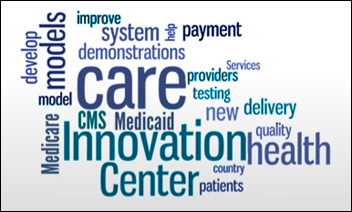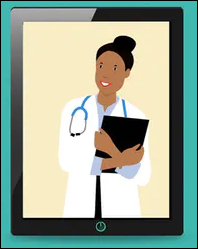EPtalk by Dr. Jayne 12/17/20
I was excited to see joint press releases this morning from Abbott and EMed regarding FDA Emergency Use Authorization for their at-home COVID antigen test solution. The test is the Abbott BinaxNOW test, which is being used in schools and physician offices. According to the release, they plan to deliver 30 million tests in Q1 2021, with another 90 million in Q2. It’s the lowest priced at-home test and involves performing the test in front of a live EMed supervisor via video. After testing, Abbott’s Navica app will deliver a digital testing certificate, which may be used by employers or venues as evidence of a recent negative antigen test. The solution is approved for age 15 and up and a prescription is required.
Even though antigen testing isn’t the same as the gold standard PCR test samples collected in physician offices, it would certainly help keep people at home rather than being out and about. At our practice, we’re using a technology solution to manage a virtual waiting room so that people stay in their cars or return home to wait, rather than crowd a waiting room.
One unintended consequence is people running errands while they “wait” for their visit. It’s difficult to get the public to understand that if they have had a concerning exposure for COVID or are having symptoms, they shouldn’t be exposing other people through errand running. We’re also still struggling to get patients to keep masks on during their visits despite signage and education. I’d say one of every four rooms I walk in has a person with their mask down, often talking on the phone, which has the risk of spreading droplets and aerosolized particles. If anyone has better solutions to these problems, I’m open to suggestions.
Our practice went live with a new patient education vendor this week and it’s been a blessing and a curse. I really like the new content which has both regular and easy-to-read versions and it’s much more practical than our previous vendor. On the downside, there was a glitch in mapping the content to the existing order sets, so providers are having to manually add the patient education documents to each patient plan. They’re trying to get it fixed, but it’s frustrating. I haven’t had a scribe in many shifts because so many of our staff members are out sick right now, so it all falls to the providers to fix.
We also had a radiology system outage today, which happened as I had several CT scans in the process of being read. Fortunately, the images had already been sent to the radiologists and I was just waiting on readings, rather than having my scans stuck upstream in the process. Because patients are still having difficulty getting in to see their primary care physicians and their other usual caregivers, they are winding up in urgent care. One of the scans in question revealed a tumor which is likely cancer, based on the presence of metastatic-appearing lesions. The patient had waited three hours to be seen because there were so many COVID-related patients in front of her, and I put the entire office on pause while I sat with her to discuss the diagnosis. It was a humbling experience and I was surprised at how well she coped with the news, but I’m sure it would have been better coming from her trusted family physician rather than me.
COVID vaccinations have begun in earnest across the US. In most areas, vaccine has been allocated to major health systems and hospitals. Our area began vaccinating Monday, and it became quickly apparent that despite our city having a Regional Pandemic Coalition, that once the vaccines started, arriving everyone was doing their own thing. One health system is vaccinating strictly by age, oldest first. Another is vaccinating by service line, trying to prioritize ICU and emergency department workers. A third is vaccinating seemingly at random, with several of my friends in their 30s who have no chronic health conditions or risk factors and who don’t even see COVID patients being vaccinated on the first day. I understand allocating vaccines to the organizations that have capacity to get shots in arms, but it’s not going to help the overall cause as much as it could if the scarce vaccines aren’t going in the arms of the people for whom they would provide the greatest benefit.
My practice still has no idea when we will receive vaccine, despite diagnosing 500 COVID patients every day. Since we’re not part of a hospital or health system, we were overlooked in the initial allocation. I don’t think those making the decisions understand how much pressure that urgent care centers have taken off of the hospitals as we serve on the front line. My group sees close to 2,000 patients a day, 365 days a year. We’re constantly having staffing shortages due to people being out with COVID. It’s a shame that the players couldn’t figure out a way to work together and are just looking out for their own without much consideration of the regional healthcare ecosystem.
I knew it was going to be this way, but to be honest, I underestimated the emotional impact that seeing friends and colleagues getting vaccinated would take on me. Reaching out to a national physician forum for support, it turns out that urgent cares have been overlooked in many states. We’ve seen large-format newspaper headlines that “Hope Is On The Way,” but some of us feel pretty hopeless and helpless. I had to stay away from social media this week because after a 13-hour urgent care shift, I just couldn’t process the joyous pictures of people with bandages on their arms without feeling anger and despair.
This is what having no national strategy gets us, a patchwork arrangement where some high-risk workers are still shouldering a disproportionate amount of the risk burden. Some states are doing better than others, but my state can’t even figure out how to put page numbers on its 100+ page vaccination plan, so I’m not confident about their organizational ability.
What grade would you give your state for vaccine allocation? Leave a comment or email me.

Email Dr. Jayne.



















I've figured it out. At first I was confused but now all is clear. You see, we ARE running the…